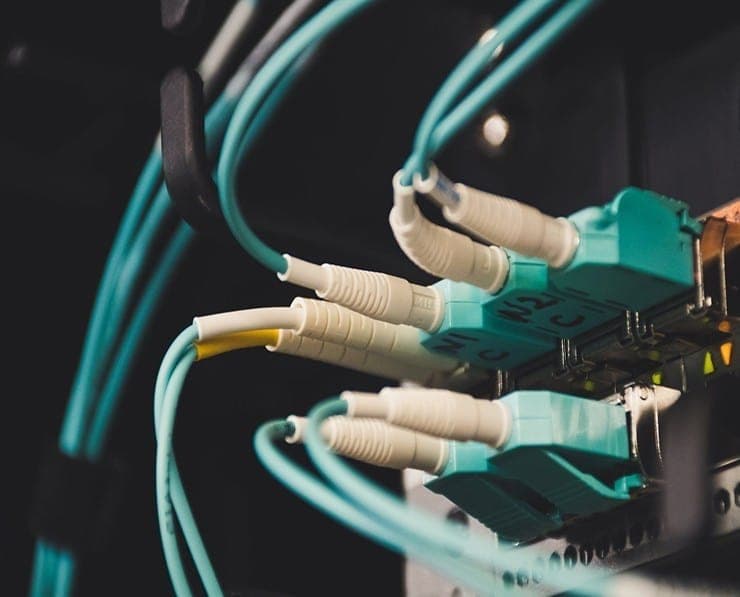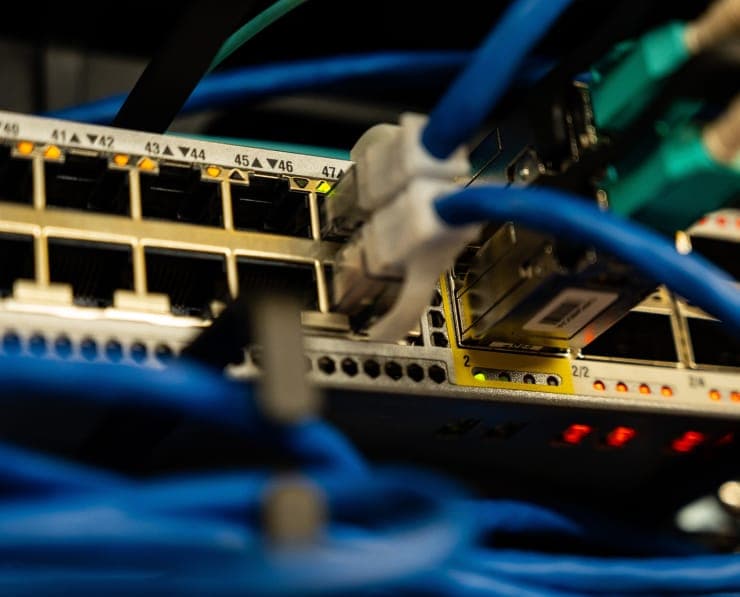Student Feedback
350-701: Implementing and Operating Cisco Security Core Technologies Certification Video Training Course Outline
Cisco Certifications - CCNP SCOR
Security Core - 350-701
Network Security Concepts
Common Security Attacks - Mitiga...
Malicious Codes - Hacking
Threat Defense Technologies
Virtual Labs - GNS3 Setup
Network Infrastructure Protection
Remote Management- TELNET - SSH
Cisco Telemetry Services
Control Plane Security
L2-Security Basic
L2-Security Advanced
Firewalls
Cisco ASA Firewall
Cisco ASA Configuration
ASA ACLs - Object Groups
ASA _ Network Address Translatio...
IOS - Zone Based Firewall
Cryptography
VPN foundations
IPSec - IP Protocol Security
Site to Site IPSEC VPN
Remote Access VPN
Authentication, Authorization, A...
AAA Authentication
AAA Authorization
WEb Traffic - Attacks- Solutions
CIsco Web Security Appliance - WSA
Email Security _ ESA
Intrusion Prevention System - IPS
Network Management
Network Automation
SDN & SDN Controllers
SDN-Control-MGMT-DATA Plane
SDN Models - Architecture
Application Programming Interfac...
Cisco DEVNET - SANDBOXs
Cisco DNA Center
Web Service API - REST API
Network Automation Tools
PUPPET - Config MGMT Tool
CHEF- Config MGMT Tool
ANSIBLE- COnfig MGMT Tool
JSON Data Encoding
Cisco Certifications - CCNP SCOR
350-701: Implementing and Operating Cisco Security Core Technologies Certification Video Training Course Info
Cisco 350-701 Security Core Technologies Training: Complete Guide for Certification
Hands-On Cisco 350-701 Security Core Technologies Practice Exam for CCNP Security
What You Will Learn From This Course
• Understanding the core principles of network security and risk management
• Identifying and mitigating threats using advanced security techniques
• Implementing secure access methods, including 802.1X authentication, NAC, and identity management
• Configuring and managing site-to-site and remote access VPNs, including SSL VPNs and high-availability deployments
• Applying security features to routers and switches, implementing secure routing protocols, and ensuring network segmentation and isolation
• Deploying endpoint security solutions, including antivirus, anti-malware, HIPS, and endpoint threat detection and response
• Managing mobile device security and implementing BYOD and guest access policies
• Securing cloud environment, including cloud infrastructure, applications, and data protection
• Designing secure network architectures using defense-in-depth strategies and best practices
• Gaining hands-on experience through practice labs and simulation-based exercises
• Preparing for the Cisco 350-701 Security Core Technologies exam with comprehensive knowledge of exam topics and practical scenarios
Course Overview
The Cisco 350-701 Security Core Technologies course is designed to provide IT professionals, network engineers, and security specialists with a comprehensive understanding of core security technologies required in modern enterprise networks. This course focuses on developing expertise in implementing, configuring, and managing security solutions across networks, endpoints, and cloud infrastructures. Participants will gain both theoretical knowledge and practical skills essential for preparing for the Cisco 350-701 certification exam, while also building hands-on experience in real-world network security scenarios.
The course emphasizes network security fundamentals, secure access mechanisms, VPN technologies, secure routing and switching, endpoint protection, cloud security, and security architecture. Each module provides in-depth knowledge of security principles along with practical applications that allow learners to confidently apply these concepts in enterprise environments.
Learning Objectives
The primary objectives of this course are to equip learners with the knowledge and skills to:
• Understand, evaluate, and implement core network security technologies within enterprise networks
• Develop a clear understanding of security concepts, governance, compliance, and risk management strategies
• Configure and troubleshoot secure access mechanisms, including network access control and identity management solutions
• Deploy and manage VPN technologies to ensure secure communication across enterprise networks
• Apply security measures to the routing and switching infrastructure and ensure network segmentation and isolation
• Implement endpoint security solutions to protect against malware, intrusions, and other threats
• Secure cloud services, applications, and data with best practices and advanced cloud security tools
• Design robust, scalable, and secure network architectures following defense-in-depth principles
• Prepare effectively for the Cisco 350-701 certification exam using a combination of theoretical study, practical exercises, and practice exams
• Gain confidence in applying security knowledge to real-world enterprise network environments
Target Audience
This course is specifically designed for:
• Network engineers and administrators seeking to enhance their security skills in Cisco environments
• Security specialists and IT professionals aiming to achieve Cisco 350-701 certification
• System and network architects responsible for designing and managing secure enterprise networks
• IT managers and team leaders overseeing security implementations and compliance within their organizations
• Individuals interested in building a career in cybersecurity or network security within enterprise and cloud environments
• Professionals looking to gain hands-on experience with Cisco security technologies and prepare for advanced security certifications
Requirements
To succeed in this course and fully grasp the material, learners are expected to meet the following requirements:
• Basic understanding of networking concepts, including routing and switching
• Familiarity with TCP/IP protocols and network services
• Knowledge of enterprise IT environments and infrastructure components
• Awareness of security principles and common network vulnerabilities
• Access to lab environments, simulation tools, or virtual machines for hands-on practice
• Commitment to dedicating time to both theoretical study and practical exercises
• Willingness to engage with real-world security scenarios and case studies
Prerequisites
Before enrolling in this course, candidates should have:
• Fundamental knowledge of networking concepts and protocols
• Experience with configuring and managing network devices, including routers and switches
• Understanding of basic security principles, including firewalls, access control, and threat mitigation
• Familiarity with common operating systems, such as Windows and Linux, and basic system administration tasks
• Previous exposure to enterprise IT environments, cloud technologies, or endpoint management solutions
• Basic understanding of virtualization and cloud computing concepts
• A desire to pursue Cisco security certifications and enhance professional career growth in network security
Course Modules
The Cisco 350-701 Security Core Technologies course is structured into detailed modules to guide learners through each critical aspect of network security. These modules include comprehensive lessons, practical labs, simulation exercises, and scenario-based examples to reinforce learning.
The first module covers fundamental security concepts and introduces learners to threat analysis, risk assessment, and mitigation techniques. Participants explore how security policies, governance, and compliance measures shape enterprise network defenses.
The second module dives into secure access mechanisms. Learners gain hands-on experience implementing 802.1X authentication, network access control (NAC), identity management systems, BYOD policies, and guest access strategies.
The third module focuses on VPN technologies. Participants learn to configure and manage site-to-site VPNs, remote access VPNs, and SSL VPNs while understanding high-availability and scalability considerations.
The fourth module explores secure routing and switching. Learners implement security features on routers and switches, configure secure routing protocols like OSPF and BGP, and practice network segmentation and VLAN isolation techniques.
The fifth module emphasizes endpoint protection. Students gain skills in deploying antivirus and anti-malware solutions, host-based intrusion prevention systems, endpoint threat detection and response, and mobile device management.
The sixth module addresses cloud security, including securing cloud infrastructure, applications, data protection, and cloud access security broker (CASB) deployment.
The final module focuses on network security architecture, including secure network design, defense-in-depth strategies, and security operations. Learners practice applying best practices to build secure enterprise networks capable of defending against evolving threats.
Hands-On Experience
Throughout the course, participants engage in practical labs and simulations designed to replicate real-world network environments. These exercises provide opportunities to implement security solutions, troubleshoot common issues, and apply learned concepts in controlled, risk-free settings. Hands-on experience ensures that learners are prepared for both the certification exam and real-world scenarios in professional environments.
Exam Preparation
The course also prepares learners for the Cisco 350-701 certification exam. Participants are provided with exam-focused resources, including practice tests, scenario-based questions, and exam simulations. These resources help learners build confidence, identify areas for improvement, and ensure readiness for the official exam.
Career Advancement
Completing this course equips professionals with skills that are highly sought after in network security and cybersecurity domains. Graduates can pursue advanced roles such as network security engineer, security analyst, cybersecurity specialist, and security consultant. Mastery of Cisco 350-701 Security Core Technologies enhances professional credibility, supports career growth, and opens doors to advanced certifications and specialized IT security roles.
Course Modules / Sections
The Cisco 350-701 Security Core Technologies course is structured into detailed, logically organized modules that cover each critical aspect of enterprise network security. Each module is designed to provide a blend of theoretical knowledge, practical application, and hands-on experience. The modules focus on real-world scenarios, helping learners understand how to apply security principles and technologies effectively within enterprise environments.
The first module introduces fundamental security concepts, providing learners with a strong foundation in threat analysis, risk mitigation, and security governance. Students explore the principles of network security, the role of security policies, and methods for establishing compliance with regulatory standards. This module also covers network security architecture, including defense-in-depth strategies and secure network design principles.
The second module focuses on secure access solutions. Learners dive into 802.1X authentication, network access control (NAC), web authentication, and identity management systems. BYOD and guest access strategies are covered in depth, ensuring participants understand how to securely manage a variety of devices and users within an enterprise network. This module emphasizes hands-on configuration, troubleshooting, and monitoring of secure access technologies.
The third module explores virtual private networks (VPNs). Participants learn to deploy site-to-site and remote access VPNs, including SSL VPNs. The module addresses VPN high availability, scalability, and troubleshooting. It also examines the integration of VPN solutions with secure access policies and endpoint security measures, providing a holistic approach to enterprise network security.
The fourth module covers secure routing and switching. Learners configure and manage routers and switches with security features enabled, implement secure routing protocols such as OSPF and BGP, and practice VLAN security and network segmentation. This module emphasizes the importance of isolating network segments to reduce risk and limit potential attack vectors.
The fifth module focuses on endpoint protection. Participants explore a wide range of endpoint security technologies, including antivirus, anti-malware, host-based intrusion prevention systems (HIPS), and endpoint threat detection and response (ETDR). Mobile device management (MDM) solutions and policies for securing mobile endpoints are also included. Learners engage in hands-on exercises to deploy and manage endpoint security solutions in simulated enterprise networks.
The sixth module addresses cloud security, covering cloud infrastructure, applications, and data protection. Participants learn how to implement security measures for cloud environments and configure Cloud Access Security Brokers (CASBs) to monitor and enforce cloud security policies. This module emphasizes securing cloud-based resources while maintaining accessibility and usability for end-users.
The final module emphasizes network security architecture and operations. Learners apply defense-in-depth strategies to design secure networks, implement monitoring and incident response processes, and establish best practices for ongoing network security management. This module consolidates knowledge from previous modules and integrates practical exercises to simulate real-world enterprise network security challenges.
Key Topics Covered
The key topics in the Cisco 350-701 Security Core Technologies course are designed to ensure comprehensive coverage of all areas required for certification and practical application.
Security Concepts include threat analysis, risk assessment, mitigation techniques, security policies, governance, and regulatory compliance. Learners study how to design secure networks, enforce security controls, and apply defense-in-depth strategies to protect against evolving threats. This section emphasizes understanding the principles behind security decisions and the rationale for implementing specific technologies.
Secure Access covers 802.1X authentication, network access control (NAC), web authentication, and identity management solutions. The module also addresses BYOD and guest access policies, focusing on how to securely allow diverse devices and users on enterprise networks. Learners gain practical skills in configuring secure access mechanisms, troubleshooting authentication failures, and monitoring access policies to maintain compliance and security.
VPN technologies include site-to-site VPNs, remote access VPNs, SSL VPNs, and high-availability configurations. Participants explore VPN protocols, tunneling mechanisms, encryption standards, and best practices for integrating VPNs with other security measures. The module emphasizes hands-on practice with VPN deployment, configuration, and troubleshooting to ensure secure communication across networks.
Secure Routing and Switching focuses on implementing security features on routers and switches, configuring secure routing protocols such as OSPF and BGP, and applying VLAN security and network segmentation. Learners explore how to protect routing infrastructure, prevent unauthorized access, and isolate network segments to mitigate potential threats. This section includes practical labs to simulate enterprise network security scenarios.
Endpoint Protection includes antivirus and anti-malware deployment, host-based intrusion prevention systems (HIPS), endpoint threat detection and response (ETDR), and mobile device management (MDM). Participants learn to monitor and manage endpoint security, respond to detected threats, and enforce policies to maintain endpoint compliance and integrity. The module integrates real-world examples to demonstrate how endpoint security impacts overall network security.
Cloud Security covers securing cloud infrastructure, applications, and data. Participants explore cloud access security brokers (CASBs), data protection techniques, and best practices for maintaining security in cloud environments. The module addresses the challenges of balancing security with accessibility and scalability in cloud deployments, providing learners with practical strategies to safeguard cloud resources.
Network Security Architecture focuses on designing and implementing secure enterprise networks using defense-in-depth principles. Learners apply security best practices for network segmentation, threat detection, monitoring, and incident response. This module reinforces how the integration of multiple security layers creates a robust and resilient network capable of defending against internal and external threats.
Teaching Methodology
The Cisco 350-701 Security Core Technologies course employs a blended teaching methodology that combines theoretical instruction, hands-on labs, practical exercises, and scenario-based learning. This approach ensures that learners not only understand core concepts but also gain the practical skills necessary to apply them in real-world environments.
Instructor-led sessions provide detailed explanations of security principles, protocols, and technologies. These sessions are supplemented with demonstrations, guided exercises, and visual aids to enhance understanding and retention. Participants are encouraged to ask questions and engage in discussions to clarify complex concepts and explore practical applications.
Hands-on labs are a central component of the teaching methodology. Learners configure routers, switches, VPNs, endpoints, and cloud environments in simulated enterprise networks. These labs provide experiential learning opportunities that mirror real-world scenarios, allowing learners to practice deployment, troubleshooting, and monitoring of security technologies.
Scenario-based learning is integrated throughout the course to reinforce the application of security principles in realistic situations. Participants analyze case studies, assess threats, design secure network solutions, and implement mitigation strategies. This approach ensures learners can translate theoretical knowledge into actionable skills that meet organizational security requirements.
Self-paced learning resources, including study guides, practice questions, and online simulations, complement instructor-led sessions. These resources allow learners to review and reinforce concepts at their own pace, supporting deeper understanding and exam preparation. Collaborative exercises and group discussions encourage peer-to-peer learning, knowledge sharing, and problem-solving skills development.
Continuous feedback and assessment are incorporated to track progress and identify areas for improvement. Instructors provide guidance and support, ensuring learners are confident in their abilities and fully prepared for the Cisco 350-701 certification exam and real-world security challenges.
Assessment & Evaluation
Assessment and evaluation in the Cisco 350-701 Security Core Technologies course are designed to measure knowledge retention, practical skills, and readiness for the certification exam. Multiple forms of assessment are employed to ensure a comprehensive evaluation of learners’ abilities.
Written assessments include multiple-choice, scenario-based, and short-answer questions that test understanding of security concepts, protocols, and best practices. These assessments evaluate learners’ theoretical knowledge and their ability to apply principles to hypothetical scenarios.
Practical assessments involve hands-on labs and exercises that simulate real-world network environments. Learners configure, monitor, and troubleshoot routers, switches, VPNs, endpoints, and cloud resources, demonstrating their ability to implement secure network solutions. Performance is evaluated based on accuracy, efficiency, and adherence to best practices.
Simulation-based assessments provide learners with opportunities to respond to complex security scenarios in controlled, risk-free environments. Participants analyze network threats, apply mitigation strategies, and validate security configurations. These exercises assess problem-solving skills, critical thinking, and practical application of knowledge.
Continuous evaluation is implemented through quizzes, lab reviews, and instructor feedback. Learners receive guidance on areas requiring improvement, and their progress is monitored to ensure mastery of key topics. Regular assessments prepare learners for the Cisco 350-701 exam by reinforcing core concepts and enhancing confidence in real-world security implementations.
Final evaluations consolidate theoretical knowledge and practical skills. Learners complete comprehensive practice exams and scenario-based exercises to simulate the certification experience. Successful completion of these assessments demonstrates readiness for the Cisco 350-701 Security Core Technologies exam and equips participants with the expertise required for advanced security roles in enterprise and cloud networks.
The combination of theoretical instruction, hands-on practice, scenario-based exercises, and continuous assessment ensures that learners develop a holistic understanding of network security principles, gain practical experience, and are fully prepared for professional application and certification.
Benefits of the Course
The Cisco 350-701 Security Core Technologies course offers numerous benefits for IT professionals, network engineers, and security specialists seeking to enhance their expertise in enterprise security. One of the primary benefits is the acquisition of a comprehensive understanding of core security technologies, enabling participants to implement, manage, and troubleshoot security solutions effectively across network, endpoint, and cloud environments.
Another key benefit is the development of practical, hands-on skills through lab exercises, simulations, and scenario-based learning. These activities allow participants to apply theoretical knowledge in real-world situations, preparing them for challenges they may encounter in enterprise network security operations. Practical experience gained from the course builds confidence in deploying and managing security technologies in professional environments.
The course also enhances career prospects by preparing participants for the Cisco 350-701 Security Core Technologies certification exam. Achieving this certification validates a professional’s expertise in network security principles, secure access, VPN technologies, secure routing and switching, endpoint protection, and cloud security. Certified professionals are highly sought after in the industry and are well-positioned for advanced roles such as network security engineer, security analyst, cybersecurity specialist, and security consultant.
Participants benefit from exposure to the latest trends, tools, and best practices in network and cybersecurity. The course covers emerging threats, defense-in-depth strategies, and innovative approaches to securing networks, endpoints, and cloud environments. This knowledge ensures learners remain up-to-date with evolving security challenges and solutions, enhancing their ability to design, implement, and manage secure network infrastructures.
Additionally, the course improves problem-solving and critical-thinking skills. Learners analyze security incidents, identify vulnerabilities, and develop mitigation strategies, which strengthens their ability to respond effectively to security threats in real-time. These skills are invaluable for professionals responsible for maintaining enterprise network security and ensuring organizational compliance with regulatory requirements.
Networking and collaboration opportunities are another benefit of the course. Participants engage with instructors, peers, and industry experts through discussions, group exercises, and online communities. This interaction promotes knowledge sharing, professional networking, and collaborative learning, enhancing the overall learning experience and supporting career growth.
Course Duration
The Cisco 350-701 Security Core Technologies course is designed to accommodate both comprehensive learning and practical experience. The typical duration of the course varies depending on the learning format and individual pace, but most participants complete the course in approximately six to eight weeks when following a structured schedule.
Instructor-led sessions are generally conducted over multiple weeks, with each session lasting several hours and covering specific modules in detail. These sessions combine theoretical instruction, demonstrations, and guided hands-on exercises to ensure participants gain a deep understanding of each topic.
Self-paced learning options are also available, allowing participants to study at their own convenience and spend additional time on topics that require further practice or clarification. Self-paced learning is ideal for professionals who are balancing work responsibilities with training and prefer to customize their learning schedule.
Hands-on labs, practical exercises, and simulation-based learning are integrated throughout the course to reinforce theoretical concepts. These activities require additional time to complete, but they are essential for developing practical skills and building confidence in implementing security solutions. Participants are encouraged to allocate sufficient time for lab practice to maximize the benefits of the course.
Exam preparation is incorporated into the overall duration of the course. Participants engage with practice exams, scenario-based exercises, and review sessions to consolidate their knowledge and assess readiness for the Cisco 350-701 certification exam. The duration dedicated to exam preparation ensures that learners are fully prepared to achieve certification and apply their skills in real-world scenarios.
Tools & Resources Required
To maximize learning and hands-on experience, participants in the Cisco 350-701 Security Core Technologies course require access to specific tools and resources. The course combines theoretical instruction with practical exercises, and having the appropriate tools ensures that learners can fully engage with the curriculum.
Networking equipment such as routers, switches, firewalls, and access points is essential for hands-on labs. Participants use these devices to configure secure routing and switching, implement VLAN security, and deploy network access control and VPN solutions. Physical devices can be supplemented with virtualized lab environments for scenarios that do not require direct hardware interaction.
Simulation and virtualization tools play a critical role in the learning experience. Participants use network simulators, virtual labs, and cloud-based platforms to replicate enterprise environments, configure security technologies, and practice troubleshooting techniques. These tools allow learners to experiment safely, test configurations, and understand the behavior of security systems without risking live networks.
Software tools and applications are also required for endpoint and cloud security exercises. Antivirus and anti-malware software, host-based intrusion prevention systems, mobile device management applications, and cloud security management tools are integrated into the labs and practical exercises. These resources help learners gain hands-on experience with industry-standard solutions used in enterprise security operations.
Documentation, study guides, and reference materials are important resources to support theoretical learning. Official Cisco guides, technical manuals, and supplementary study resources provide detailed explanations, best practices, and practical examples to enhance understanding of core security technologies. These materials serve as valuable references during the course and beyond, supporting continuous learning and professional development.
Online communities, forums, and collaborative platforms provide additional support for learners. Participants can engage with peers, instructors, and industry professionals to ask questions, share knowledge, and discuss complex topics. These resources facilitate interactive learning, enable knowledge sharing, and provide guidance on the real-world application of security technologies.
Access to the internet and a reliable computing environment is essential for online labs, simulations, cloud exercises, and self-paced study. A stable internet connection ensures uninterrupted participation in virtual sessions, access to online resources, and seamless engagement with collaborative platforms.
By leveraging these tools and resources, participants can fully engage with the Cisco 350-701 Security Core Technologies course, gain practical skills, and achieve mastery of enterprise security solutions. The combination of physical devices, virtual labs, software applications, documentation, and online support ensures a comprehensive and effective learning experience.
Career Opportunities
The Cisco 350-701 Security Core Technologies course opens up a wide range of career opportunities for IT professionals, network engineers, and cybersecurity specialists. Certification in this field demonstrates advanced knowledge of enterprise security technologies, practical skills in network protection, and the ability to implement comprehensive security solutions. This combination of theoretical understanding and hands-on experience makes certified professionals highly sought after in various industries.
Network security engineers are one of the primary roles that benefit from this course. Professionals in this position design, implement, and maintain secure network infrastructures, ensuring the protection of sensitive data and critical systems. They are responsible for configuring firewalls, VPNs, secure routing protocols, and access control measures to mitigate potential threats. Cisco 350-701 certification validates the skills required to succeed in these responsibilities.
Security analysts are another career path supported by this certification. Analysts monitor networks for potential threats, conduct vulnerability assessments, and respond to security incidents. They analyze logs, identify malicious activities, and implement corrective measures to maintain the integrity of enterprise systems. The knowledge gained from the course equips analysts to handle complex security scenarios and provide actionable insights to improve overall network security.
Cybersecurity specialists and consultants also benefit from the Cisco 350-701 certification. These professionals work with organizations to develop security strategies, perform risk assessments, and recommend solutions for enhancing enterprise security. They often provide guidance on compliance, policy enforcement, and security architecture design. Mastery of the course content allows these professionals to deliver value through expert advice and practical solutions.
System administrators and IT managers can leverage the skills acquired from this course to manage enterprise security operations effectively. They are responsible for ensuring that organizational networks are protected from internal and external threats, overseeing security policy enforcement, and coordinating response efforts during security incidents. Certification demonstrates their competence in implementing comprehensive security measures and managing security teams efficiently.
The course also prepares learners for roles in cloud security management. As organizations increasingly adopt cloud infrastructure, professionals skilled in securing cloud applications, data, and services are in high demand. Knowledge of cloud security technologies, cloud access security brokers (CASBs), and cloud compliance best practices positions certified professionals to manage secure cloud environments and support digital transformation initiatives.
In addition to technical roles, the Cisco 350-701 certification enhances career growth for professionals aiming for leadership positions in network security and cybersecurity domains. Certified professionals can advance to senior network security engineer, security architect, cybersecurity manager, or chief information security officer (CISO) roles. These positions require a deep understanding of security principles, strategic thinking, and the ability to design and manage complex security infrastructures.
Organizations across industries value Cisco-certified professionals due to their ability to reduce security risks, enhance network reliability, and ensure regulatory compliance. Graduates of this course can pursue opportunities in sectors such as finance, healthcare, government, telecommunications, cloud services, and large enterprise networks. The certification provides a competitive advantage and validates expertise to potential employers, increasing employability and career mobility.
The demand for skilled cybersecurity professionals continues to grow as cyber threats evolve in complexity. Professionals certified in Cisco 350-701 Security Core Technologies are well-positioned to capitalize on this demand. The knowledge and skills gained from the course ensure they can implement security best practices, address emerging threats, and contribute to the overall security posture of their organizations.
Conclusion
The Cisco 350-701 Security Core Technologies course is a comprehensive program designed to equip IT professionals with the knowledge, skills, and practical experience required to excel in network security roles. The course covers a wide range of topics, including security concepts, secure access, VPNs, secure routing and switching, endpoint protection, cloud security, and network security architecture. Participants gain both theoretical understanding and hands-on experience to confidently apply security technologies in real-world environments.
Completing this course not only prepares learners for the Cisco 350-701 certification exam but also enhances their professional credentials and career prospects. The practical labs, simulation exercises, and scenario-based learning enable participants to implement, troubleshoot, and manage enterprise security solutions effectively. By mastering these core security technologies, learners can contribute to organizational security, mitigate risks, and maintain compliance with industry standards.
The course is suitable for network engineers, IT professionals, security specialists, system administrators, and anyone seeking to advance their career in cybersecurity. Participants benefit from exposure to current best practices, emerging technologies, and advanced security strategies that are applicable across various industries and enterprise environments. The knowledge acquired from this course ensures learners are well-prepared to address the evolving challenges of network and cybersecurity.
Hands-on experience gained through the course empowers professionals to apply their knowledge in practical scenarios, develop critical thinking skills, and solve complex security problems. Participants are trained to handle endpoint security, configure VPNs, secure cloud infrastructure, and design robust network architectures. This skill set enhances their value to employers and positions them for advanced roles in network security and cybersecurity management.
The Cisco 350-701 Security Core Technologies certification validates expertise and demonstrates commitment to professional growth. Achieving this certification signals to employers that the individual possesses the technical knowledge, practical skills, and professional competence required to manage enterprise security solutions effectively. Certified professionals are recognized for their ability to implement security measures, protect critical assets, and respond to security incidents efficiently.
The course also emphasizes continuous learning and professional development. Participants are encouraged to stay updated with evolving security threats, technologies, and industry standards. The knowledge gained provides a strong foundation for pursuing advanced certifications, specialized security training, and leadership roles in cybersecurity. Graduates of this course are equipped to adapt to changing security landscapes and contribute to the resilience and protection of enterprise networks.
In summary, the Cisco 350-701 Security Core Technologies course is an essential program for anyone aiming to build a career in network security and cybersecurity. It offers a structured, practical, and comprehensive learning experience, prepares learners for certification, enhances professional skills, and opens doors to numerous career opportunities in the rapidly growing field of cybersecurity.
Enroll Today
Enroll in the Cisco 350-701 Security Core Technologies course today to begin your journey toward becoming a certified network security professional. Gain the knowledge, hands-on experience, and practical skills required to implement, manage, and troubleshoot enterprise security solutions. Take advantage of this opportunity to enhance your career prospects, prepare for certification, and position yourself as a highly qualified professional in the field of cybersecurity.
Start building your expertise in secure network technologies, VPNs, endpoint protection, and cloud security by enrolling today. Join a community of learners and professionals committed to mastering the core technologies that protect enterprise networks from evolving security threats. Develop the confidence and competence needed to advance your career and achieve success in the Cisco 350-701 Security Core Technologies certification.













